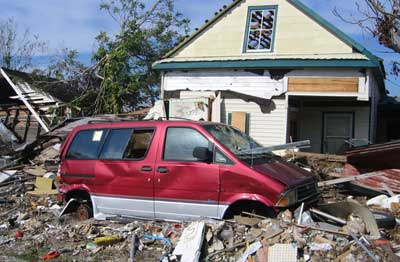
Cat bond market to hit $50bn by 2018
Dubai, November 18, 2013
The number of catastrophe or cat bonds outstanding could more than double from the current level of $19 billion to $50 billion by the end of 2018, according to a report from BNY Mellon, the global leader in investment management and investment services.
Cat bonds – which are growing at their fastest pace in six years - are risk-linked securities that transfer a specified set of risks associated with hurricanes or earthquakes from an insurer or a nation state, to investors.
The study: “The disaster gap: How insurers and the capital markets can harness big data to close the gap,” includes contributions from some of the world’s leading experts on cat bonds and big data.
“The initial investor base was dominated by hedge funds and private equity, but we are seeing more long-term investors such as pension funds buying cat bonds,” remarked Dean Fletcher, the head of EMEA Corporate Trust at BNY Mellon.
“Investors are attracted by the high yields in the current low interest rate environment. Cat bonds also offer investors a chance to diversify their portfolios because of the low correlation of risk between catastrophic events and broader financial markets,” he stated.
Globally, natural catastrophes cost the insurance industry $13 billion in the first half of 2013, and the overall economic losses were estimated at around $45 billion. The industry therefore covered less than one third of natural catastrophes, leaving a global disaster gap of $32 billion.
Commenting on the report, BNY Mellon’s international head of insurance Paul Traynor, said: “Insurers and the capital markets can help reduce the disaster gap by working together with big data to deploy new capital to cover new perils in new regions. This will reduce the cost of rebuilding for governments and provide a positive contribution to society.”
“Never has the experience of the insurer been needed more; deploying capital against previously uncovered risks requires deep underwriting and technical expertise. This expertise, as well as the comfort that comes from seeing insurers using their own capital, will encourage the capital markets to invest in more cat bonds,” observed Traynor.
The report suggests that a combination of legacy and predictive big data models will produce more robust risk modelling for cat bonds. These models should include unstructured data, fast changing data and data generated from an increasing number of sensors, mobile devices and social media applications.
BNY Mellon estimates the total amount of insurance-linked securities outstanding could reach $150 billion by the end of 2018. Of this, $50 billion is expected to include publicly traded cat bonds, the BNY Mellon report added.
The report predicts a compound annual growth rate (CAGR) of 25 per cent for ILS as an asset class and 20 per cent for cat bonds as a subset of this. This compares to the CAGR of 24 per cent for ILS over the past 13 years and 30 per cent for cat bonds as a subset over the past nine years.
BNY Mellon acts as a trustee and paying agent, and collateral agent on cat bonds. It was trustee on 68 per cent of all cat bonds in 2012.-TradeArabia News Service







